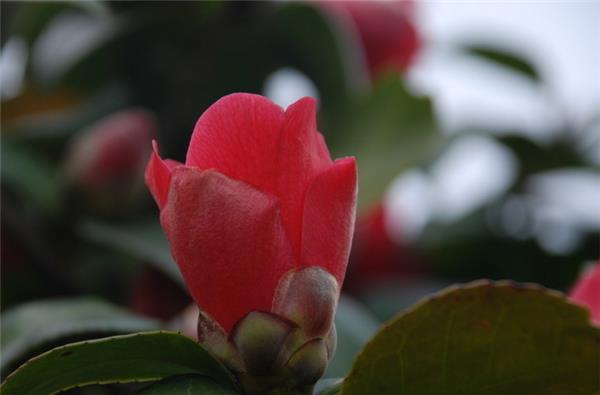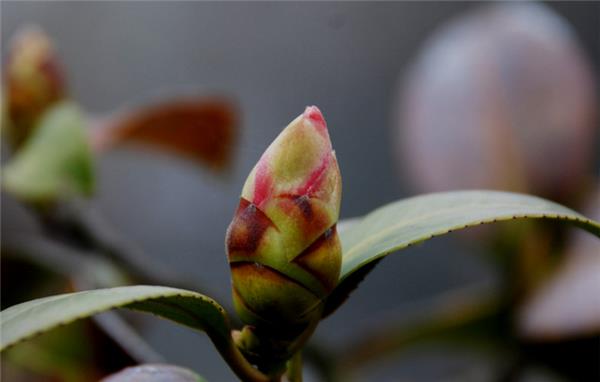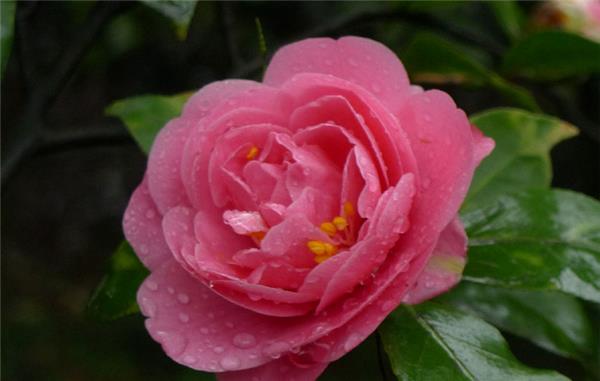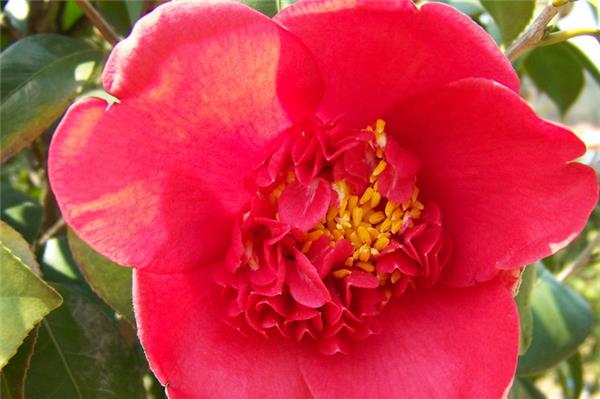[pot technology of enduring winter flowers] how to grow winter flowers
Camellia, also known as Camellia, Theaceae, Camellia plants belong to evergreen shrubs and small trees. The ancient name sea pomegranate. There are nicknames such as jade camellia, Niidong or mandala, which are divided into East China Camellia, Sichuan Camellia and late Camellia. Camellia is always in the proud snow to welcome the spring, which can be used to decorate and beautify your bedroom.

1. Potted techniques of enduring winter flowers
15~20cm pot is commonly used in camellia flower pot cultivation. Camellia root system is fragile, transplanting should be careful not to hurt the root system. Potted camellia, change pots after blooming in spring or September to October every year, cut off only long or dead branches, and replace them with fertile rotten leaf soil. Camellia likes to be moist, but the soil should not be too wet, especially potted plants, which can easily cause rotten roots. On the contrary, impermeable irrigation, too dry, leaves curling, will also affect the development of flower buds.
The cultivation methods of camellias should pay attention to the maintenance after potted plants. After changing pots in spring, there is no need to apply fertilizer immediately. During the vigorous growth period of stems and leaves in summer, fertilizing once every semimonthly. From budding to flowering in September, two more phosphorus and potassium fertilizers were applied, combined with spraying flower Zhuangtiling to make the buds strong.
Camellia begins to form flower buds in late summer and early autumn. One or two buds should be left on each shoot, not too many, so as not to consume nutrients and affect the flowering of the main buds. Pay attention to the position of leaf buds when picking buds in order to keep the plant shape beautiful. At the same time, the dry waste buds are easily removed. During the growing period, sufficient moisture should be maintained, and the leaves should be sprayed once a day to maintain high air humidity and 50% shade in summer.

Winter maintenance of winter-resistant flowers
Light. Camellia is a semi-negative flower, which needs to be shaded by a shed in summer. After the Beginning of Autumn, the temperature dropped and camellia entered the period of flower bud differentiation, which should gradually make the whole plant receive sufficient light. Winter should be placed in an indoor sunny place, if the indoor light is too weak, camellia is poor growth, and easy to get diseases and insect pests.
Temperature. Camellia likes warmth and is afraid of cold. The indoor temperature should not be lower than 5 ℃. In a room with a temperature of 10 ℃ to 15 ℃, other measures are appropriate, the Spring Festival can blossom, and the florescence can last until March. Humidity. General winter indoor drier, should often spray water to the mountain tea surface, in order to form a humid microclimate. But avoid spraying water on rainy days.
Water it. Winter watering depends on the indoor temperature, usually once every 3 days or so, keep the basin soil moist and avoid stagnant water or half a section of water. Tap water should be stored in a bucket for a day or two to allow the chlorine to evaporate. It is better to put 1% ferrous sulfate in the water to improve the water quality.

3. fertilization techniques of winter flower tolerance in potted plants
(1) nitrogen fertilizer promotes spring shoot.
Organic camellias usually begin to bloom in the shade at about 18 ℃. At this time, bud-destroying fertilizer based on nitrogen fertilizer should be applied once every 10 days until the spring shoot begins to Lignification. If there are conditions, foliar spraying can be carried out with salt solution at the same time. After many times of root and foliar spraying, the spring shoot will grow very luxuriantly, the leaf can extend to the maximum, and the shoot can accumulate rich nutrients, creating good conditions for flower bud differentiation.
(2) increase the application of organic fertilizer and potash fertilizer to promote flower bud differentiation and form flower buds.
The spring shoot of organic camellia is full, and after Lignification, there will be a short period of semi-dormancy. At this time, the camellia changed from vegetative growth to reproductive growth, and the flower buds began to differentiate. If you want to make camellias produce more buds, you should apply more phosphorus and potassium fertilizer, and no or less nitrogen fertilizer. If the small organic camellias grow mainly, it is still dominated by nitrogen fertilizer, and no or less phosphorus fertilizer is applied.

Put one or two potted camellias in the living room of your home, which can make your home more green. Camellia always blossoms in winter when almost all flowers wither, which makes people feel very warm. That's all for today's introduction to the culture methods of camellias. Thank you for your appreciation.
- Prev

Matters needing attention in marigold culture how to raise marigolds before they bloom
Matters needing attention in marigold culture how to raise marigolds before they bloom
- Next

The efficacy and function of Calendula how to use Calendula correctly
The efficacy and function of Calendula how to use Calendula correctly
Related
- Wuhan Hospital Iron Tree Blooming Result Was Instantly Frightened by the Gardener Master
- Which variety of camellia is the most fragrant and best? Which one do you like best?
- What is the small blue coat, the breeding methods and matters needing attention of the succulent plant
- Dormancy time and maintenance management of succulent plants during dormancy
- Minas succulent how to raise, Minas succulent plant pictures
- What are the varieties of winter succulent plants
- How to raise succulent plants in twelve rolls? let's take a look at some experience of breeding twelve rolls.
- Attention should be paid to water control for succulent plants during dormant period (winter and summer)
- Watering experience of twelve rolls of succulent plants
- Techniques for fertilizing succulent plants. An article will let you know how to fertilize succulent plants.

